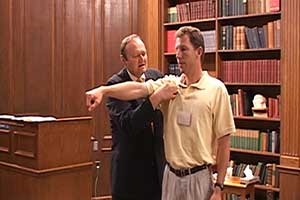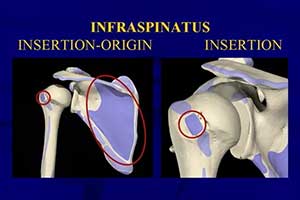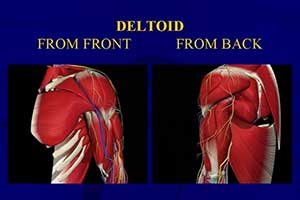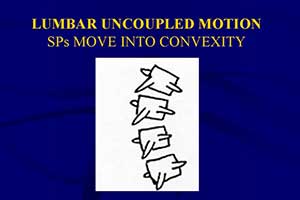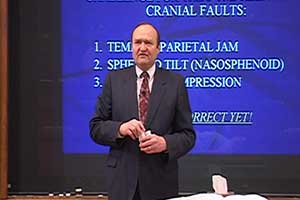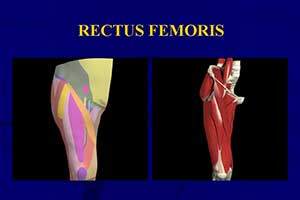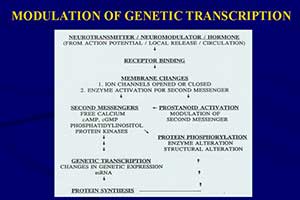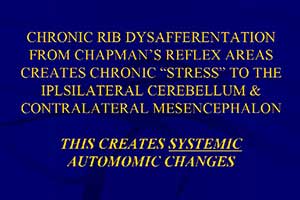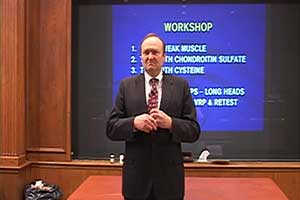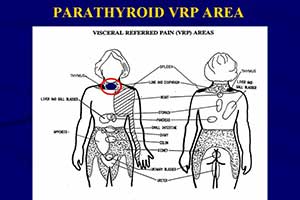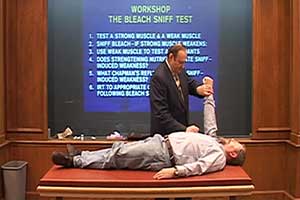Buy Individual QA Sessions
QA Session 1:
Pain Relief
- Initial Assessment Procedures
- Muscle Spindle Cell, Golgi Tendon Organ
- Origin – Insertion Techniques;
- Autogenic Inhibition & Facilitation;
- Hands-On Pain Relief Techniques Including: Injury Recall, Nociceptor Stimulation-Blocking, Set Point, and Location, Quality, Memory;
- Neurological Hierarchy for the Ordered Application of Clinical Procedures
QA Session 2:
Low Back
- Low Back Muscles;
- Vitamin E & Low Back Muscles;
- Vertebral Challenge;
- Pelvic Catgegories;
- Sacral & Iliac Fixations;
- Iliolumbar Ligament IRT;
- Sacrospinous & Sacrotuberous Ligament IRT;
- Gait;
- Further Distinctions Regarding the Neurological Hierarchy for the Ordered Application of Clinical Procedures
QA Session 3: Shoulder - Part 1 / Fatigue & Inflammation - Part 1
- Shoulder Muscles – Part 1 (Including Rotator Cuff Muscles);
- Visceral Challenge Technique;
- Essential Fatty Acids;
- Metabolism & Inflammation;
- Nutritional Assessment of the CBC with Differential;
- Fascial Release Technique;
- Continued Discussion of the Neurological Hierarchy for the Ordered Application of Clinical Procedures and Biochemical Implications
QA Session 1:
Pain Relief
- Shoulder Muscles – Part 2;
- Vitamin C & Shoulder Muscles;
- Common Shoulder Problems;
- Lingual Ascorbic Acid Test;
- Citric Acid Cycle & Electron Transport Chain Assessment;
- Further Discussion of the Neurological Hierarchy for the Ordered Application of Clinical Procedures and Biochemical Implications
QA Session 5: Spinal Adjusting / Fatigue & Inflammation - Part 3
- Flexor Reflex Afferent Subluxation Patterns;
- Coupled Spinal Mechanics;
- Evaluating Cervical & Lumbar Coupling;
- Correcting Uncoupled Patterns;
- Cervical & Lumbar Adjusting with Coupled Mechanics;
- Visceral Challenge Technique – Review;
- Anti-histamine Mix Challenge & Food Allergies;
- Simplified Temporosphenoidal Line Analysis;
QA Session 6: Head and Neck - Part 1 / Immune System - Part 1
- Head & Neck Muscles – Part 1;
- Screening for Cranial Faults with Pre-Test Imaging;
- Cranial & TMJ IRT;
- Cranial and TMJ Disturbance as Sources of Uncoupled Cervical Mechanics;
- Mechanical Frontal Bone Cranial Fault Correction;
- When the Immune System is Primary and When Cranial Faults and TMJ Problems are Secondary to Immune System Involvement;
- Neurological Hierarchy and the Mesencephalon, Cranial, TMJ & Immune Dysfunction
QA Session 7:
Head and Neck - Part 2
- Head & Neck Muscles – Part 2;
- TMJ Related Cranial Faults;
- Treating TMJ Muscles with IRT;
- Tooth Techniques Switching & Neurological Disorganization;
- Further Observations on the Neurological Hierarchy and the Mesencephalon, Cranial, TMJ & Immune Dysfunction
QA Session 8:
Digestive System
- Digestive Related Muscles;
- Visceral Referred Pain Area Assessment;
- Hiatal Hernia / Gastroesophageal Reflux Disease;
- Systemic Approaches to Ileocecal Valve Syndromes;
- Evaluating the Enteric Nervous System Including the Ileal Brake, Sugar & the Open ICV, Gastrocolic Reflex & Hidden Food Sensitivities;
QA Session 9: Lower Limb / Low Endocrine Function Problems
- Knee Muscles;
- Common Knee Problems;
- Extremity Challenge & Adjusting;
- TLR as an Indicator of Low Endocrine Function;
- Hypoadrenia;
- Foot & Ankle Muscles;
- Common Foot & Ankle Problems;
- Application of the QA Clinical Protocol
QA Session 10:
Adrenal Stress Syndrome / Emotional Techniques
- Hypoadrenia – Review;
- Hyperadrenia;
- Adrenal Challenge Technique;
- Introduction to Centering the Spine;
- Ligament Stress Adrenal Stress Syndrome;
- Emotional Recall Quick Fix;
- Heart-Focused Techniques;
- Expanding the Application of the QA Clinical Protocol
QA Session 11: Chemical Hypersensitivities / Liver Detoxification - Part 1
- Aldehydes & Chemical Sensitivities (Metabolic & Immunologic);
- Liver Detoxification Pathways (Phase 1 & Phase 2);
- Further Insights into the Application of the QA Clinical Protocol
QA Session 12:
Upper Limb / Liver
Detoxification - Part 2
- Elbow Muscles;
- Common Elbow Problems;
- Cholesterol Challenge & Treatment;
- Using Visceral Challenge Technique for Bad Dietary Fats;
- Wrist & Hand Muscles;
- Common Wrist & Hand Problems;
- Immune Cytokines & Liver Detoxification;
QA Session 13:
Hyperinsulinism / Stopping Joint Degeneration
- Additional Gait Challenges;
- Hyperinsulinism & Insulin Insensitivity;
- Bilateral Upper Limb Problems;
- Nutritional & Dietary Management;
- Cartilage Formation (Sulfate & Glucose Metabolism);
- Degeneration Intervention & Sulfation – Interrupting Vicious Cycles of Degenerative Disease;
- Comprehensive Application of the QA Clinical Protocol
QA Session 14:
Common Glandular
Dysfunctions
- Review Adrenal Dysfunction;
- Thyroid Gland;
- Female Hormones & the Menstrual Cycle;
- Pelvic Visceroptosis (Uterus & Prostate Lifts);
- Pituitary & Pineal Glands;
- Endocrine Gland Interactions;
- Comprehensive Application of the QA Clinical Protocol
QA Session 15:
Common Metabolic Dysfunctions / Immune System - Part 2
- When the Immune System is Secondary;
- Seven Chemicals That Cause Nociceptor Depolarization;
- Oxidation – Reduction Imbalances;
- Bleach & Ammonia Sniff Tests;
- Antioxidant Nutrition;
- Sulfur Amino Acid Metabolism & Homocysteinemia;
- Comprehensive Application of the QA Clinical Protocol
Beyond IRT
- IRT Review;
- Neurological Basis of Applied Kinesiology;
- Romberg Test Workshop;
- IRT for Head and Neck Injuries;
- IRT for the rest of the body;
- Enhanced IRT;
- Semicircular Canals
- Electron Poising Curve
- Body Quadrants and Eye Position
- Body Space Imaging
- Transneural Degeneration
- IRT Secondary To Visceral Problem
- AK Biofeedback
The Quintessential Applications Clinical Reference Manual
- Second Edition
- Fully Indexed
- Includes Expanded Appendix
- Free Shipping
Frequently Asked Questions
How soon after purchase will I be able to access my QA Sessions?
Immediately after purchase you will be sent logins (for this website) to access all your purchased QA Sessions on demand.
I have a high volume practice: won’t this protocol slow me down so I won’t be able to see as many patients?
The protocol is designed for use in any style of practice (low or high volume). It is just a matter of how much of the protocol is performed during each office visit. Beginning procedures should always be performed, as should assessment and treatment of local problems. This may take as little as two or three minutes. Depending on the time constraints of your office visit, assessments of systemic nutritional and structural factors, endocrine effects and the GI tract will be performed in appropriate order, as time dictates, and according to the neurological hierarchy expressed in the QA Clinical Protocol, as care ensues. The use of this protocol will make your office evaluation and treatment procedure more efficient and effective as sources of interference secondary to aberrant descending neural pathways are progressively redressed.
Is QA a course designed for doctors of all types?
QA is a course for any licensed doctor interested in treating patients with a physiologically sound and neurologically organized, basic sciences based treatment protocol. Although the protocol’s premise does not necessarily require AK for its effective application, AK procedures are the primary treatment modalities taught in the QA educational experience. However, since the organization of the protocol is physiologically based, any effective clinical approach can be employed and will be enhanced by placing it in the step-by-step protocol.
How will I be charged for my purchase?
Your credit card or PayPal account will be charged to Whole Health Publishing, the online publishers of this content.
For whom is QA designed?
The QA Course is designed for all doctors interested in remarkable results, including those with: No AK, chiropractic or neurology experience; Diplomates in nutrition, chiropractic neurology, AK; No nutrition experience, and everyone in between.
My question is not covered here. What should I do?
Click here to watch Dr. Schmitt discuss the QA Clinical Protocol. Please email [email protected] with your question and we will respond as quickly as possible. Some questions may require more time than others, but rest assured that all questions will be answered.
Copyright 2019- QA Home Study- All rights Reserved

